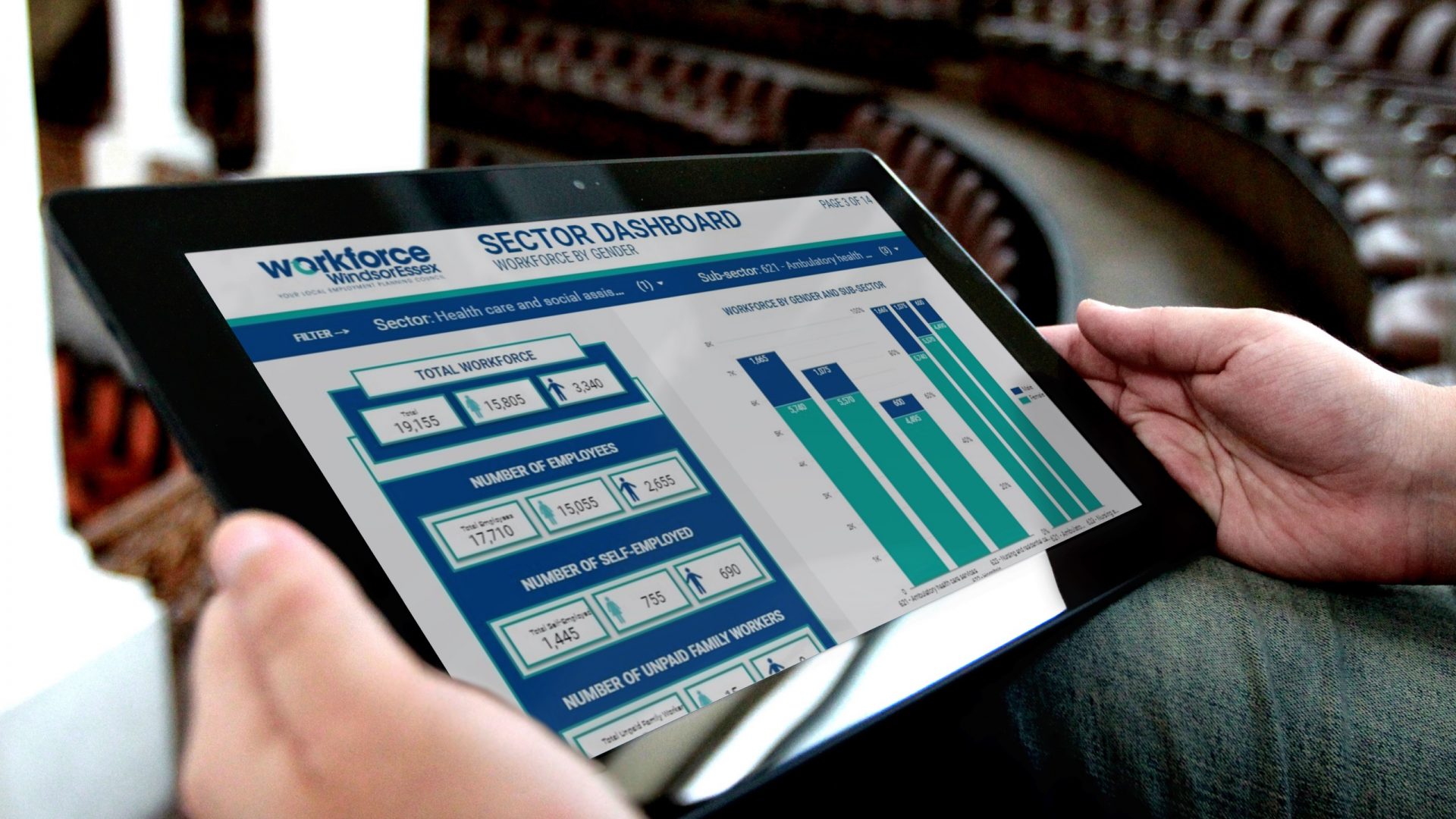Project Overview
Project Deliverable
To meet employer demand for more sector specific labour market information, the LEPC will create online interactive sector profiles featuring labour market information, blogs, and forecasted job automation in key industries.
Project Timeline
October 1, 2018 to March 29, 2019
Project Status – Completed
We are planning to launch this new tool at the Workforce Summit on February 20th, 2019. The Sector Dashboard contains a dozen interactive dashboards that allow users to pull sector/sub-sector level statistics about the supply and demand of the workforce, including job automation predictions. Users can interact with and download sector and sub-sector level data pertaining to business counts, workforce demographics, incomes, education, projected retirements, postsecondary enrollment, job postings, job automation potential and find other Workforce WindsorEssex research and tools.
Project Rationale:
One of the foremost challenges in ensuring an available and stable workforce is access to local, current, and reliable labour market information in a user-friendly format. Interactive online dashboards are now a tool used by many community organizations, businesses, and others to display information in a user-friendly format. Our community partners have requested easier access to sector-specific industry data and a central location to find the information they need. Online sector profiles can be used to supply LMI to various community groups, including employers, students, educators, job seekers, service providers, government, and the broader community to ensure informed information sharing and decision-making. Employers can use the profiles in their workforce planning, including benchmarking themselves against industry standards, accessing tools for recruitment and retention, and staying informed about the latest trends in their industry. Students and job seekers can use the profiles to explore sectors, make career decisions, and access training opportunities. Educators can use the profiles to help students learn about local in-demand sectors, while service providers can provide clients with local industry labour market information. Government and community organizations will be better able to plan for the future workforce using the trend and demographic data on the profiles. All community groups will benefit from current, user-friendly labour market information.
The online sector profiles will display total jobs, employment trends, job posting trends, post-secondary enrolment, wages, demographics, training opportunities, industry-specific recruitment and retention strategies, and local industry news. The profiles will have a filter feature that allows users to view the data by key sector (ie. Construction, Manufacturing, Finance & Retail, Service, Agriculture, Tourism & Hospitality, Health Care, Education & Social Services, Transportation & Logistics, and Information, Communications Technology). For each sector, the LEPC will create an accompanying blog feature. The profiles will also contain information on the percentage of jobs likely to be automated in the industry by occupation and the proportion of tasks that can be automated for individual occupations to further assist with workforce planning. This is an area of particular interest in our region as expressed by community partners. To market the online sector profiles, a postcard will be created for distribution to businesses, service providers and community organizations and a presentation will be made at a local meeting of the Human Resources Professional Association.
Project Contact:
Michele Gnanamuttu, Project Coordinator and Researcher
226-674-3220 ext. 855

